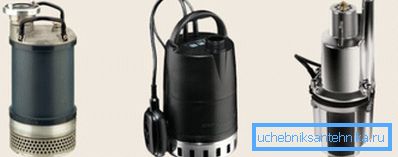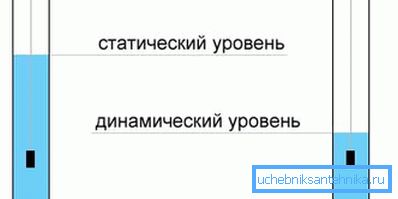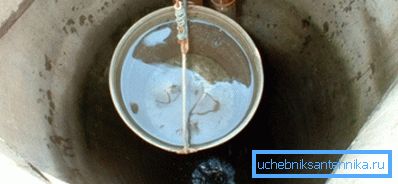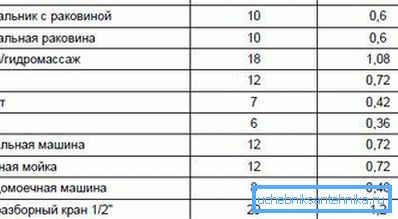Which pump is better for the well - choose the optimal type
As you know, the wells have not lost their relevance in our time because of the simplicity of the device, and the ability to build a source of their own with a fairly decent water quality. This type of water intake can be made almost everywhere (there are rare exceptions when the aquifer is contaminated). And after the completion of the work, the developers have the same question - which pump is better for the well?

In this review, we will look at all aspects of informed choice: what you should pay attention to, what factors should be considered, and what advantages each of the equipment groups represented on the market has.
The main factors to consider when choosing
In order not to spend extra money on repair and replacement of units, you should initially choose the option that is most preferable specifically for your conditions of use. Before you go to the store, you need to make a lot of measurements and determine the specifics of using the equipment.
Based on these data, you will have an idea what kind of pump is needed for the well in your conditions.
Measurements and calculations

First of all, it is necessary to take several measurements and calculate several values in order for you to imagine the conditions in which the equipment will work:
- The depth of the source is a value equal to the distance from the ground to the gravel filter at the bottom of the intake. To measure this value is quite simple: take a long rope or twine, at one end of which a stone is tied. The device is lowered into the well until the stone lies on the bottom, after which you stretch the rope and mark the surface level, then the measure is taken and measured with a tape measure.
Note! Many developers, whose contractors dug the well, simply look at the depth value in the source passport. In fact, the value is better to double-check, very often the actual values may differ.
- The distance from the surface to the water mirror, called in the professional environment the static water level. It is advisable to do this when the well was not used for at least 12 hours, even a day is better. The method of measurement depends on your desire, the same twine with a stone will perfectly fit.
- Dynamic water level is a very important indicator, which is also desirable to determine in advance. A submersible pump for the “Streamlet” type will be suitable for this event. .

- When figuring out which pump to put in a well in your area, it is worthwhile to calculate another important indicator - the volume of water in the source, to do it quite simply, you need to measure the diameter of the well ring from the inside. After that you can use the formula:
V =? r2 h
That is: the volume is equal to the product of the value "Pi" (3.14) by the radius in the square and by the height of the water column. So you can get the most accurate result.
Note! The performance of the equipment should not exceed the flow rate, if the value is close, then the pump should be equipped with protection against "dry running", so you will protect yourself from unnecessary costs in the future.
Determination of water quality
This event directly affects the durability of the equipment, because if the pump is designed to work with clean water, sand impurities can make it useless in a very short period of time.
A large amount of suspended matter and particulate matter is visible to the eye. In this case, you should pump out all the water and redo or make a filter out of coarse gravel, and even better - from the washed rubble. Sometimes you may need a laboratory test, it is inexpensive, but you will know for sure all the characteristics of your water.
Each model of equipment has requirements for water quality, so you will not have any problems with the choice of this aspect.

Many people ask, what pump to pump out the sand from the well? In fact, only thorough cleaning will help, but before that you really need to deflate the water with sand. The pump like “Kid” or “Streamlet” is best suited - they work well with dirty water, and their price is quite democratic - even in the event of a breakdown, you will not incur high costs.
Water consumption
An important indicator, which can be calculated quite simply. It is necessary to calculate all the taps to which the pump will supply. One tap consumes a maximum of 0.5 cubic meters of water per hour per hour; if you have 8 taps, then the largest possible consumption is 4 meters cubic per hour.
You do not need to throw a percentage on the resulting value - it is unlikely that ever all taps will work simultaneously, therefore the equipment will not work at the limit.

Features of equipment operation
Another important aspect that in no case should not be overlooked. If the equipment will be used only for watering the garden or watering the pool, you can buy a budget option and do not make any system - just a hose that stretches to the right place.

An important aspect is the seasonality of operation, if it is only summer, then it is better to choose a model that is easy to get from the source for the winter and easy to lower.
If you need a water supply for home or cottage, you need to pay attention to more sturdy and expensive modifications. In addition, you will need additional equipment - a pressure gauge, a check valve and a hydraulic accumulator, which will protect the equipment from water hammer and will maintain a constant pressure in the system.
Types of pumps
So which pump is better in the well? In fact, the main thing is that the characteristics correspond to the conditions of operation, and the configuration can be of different types.
Surface pumps
From the name it is clear that such equipment is located either in the immediate vicinity of the water, or in a special extension, or in the house in general.
The optimal conditions for the operation of such a pump is the rise of water from a depth of 3 to 8 meters. Typically, the system is equipped with a hydroaccumulator and a check valve, which greatly simplifies installation.
Such pumps are normal suction (when the system is completely filled with water) and self-priming - when the water supply is carried out by air dilution. As practice shows, the first type is more convenient and more reliable in operation.

Submersible pumps
This view is distinguished by the fact that the equipment is directly in the water and pumps water by creating pressure from below. This allows for greater productivity and work at any depth.
The case should be sealed, ideal - stainless steel, but in low-cost models, special high-strength plastic is used.
At shallow depths in the well, it is reasonable to use a pump with a float so that it does not fall too low, in addition, the design must contain protection against dry running, this will greatly increase the safety of operation.

In any case, deciding which pumps are best for the well is best decided on the basis of the particulars of use. Do not rely on the advice of sellers, as they are often subjective and offer only their products.
Conclusion
We hope this guide will help you make the right decision. The video in this article will clarify even better some aspects of the selection of equipment for a well (see also the article Water Pumps for Wells: their types and uses).